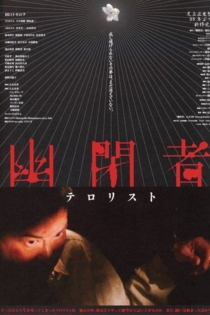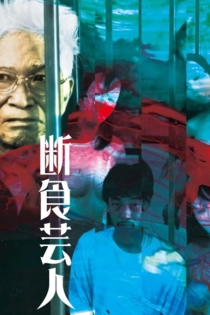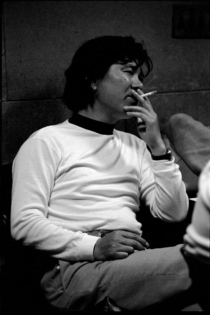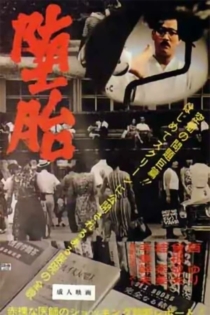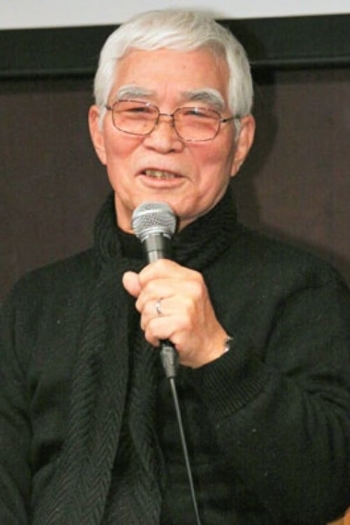
Masao Adachi
1939 (86 лет)Children of the Revolution
Shane O'Sullivan
Ulrike Meinhof, Masao Adachi
Inspired by the student revolutions of 1968, two women in Germany and Japan set out to plot world revolution as leaders of the Baader Meinhof Group and the Japanese Red Army. What were they fighting for and what have we learned?
Children of the Revolution

Il se peut que la beauté ait renforcé notre résolution - Masao Adachi
Philippe Grandrieux
Masao Adachi, Naruhiko Onozawa
The first in a planned series of films about radical filmmakers by film critic Nicole Brenez and filmmaker Philippe Grandrieux, It May Be That Beauty Has Strengthened Our Resolve is a portrait of Masao Adachi, who emerged during the Japanese New Wave of the 1960s as a screenwriter for Nagisa Oshima and Koji Wakamatsu, and directed a series of avant-garde films that grafted radical politics to the sexploitation genre. A 1971 visit to a Popular Front for the Liberation of Palestine (PFLP) training camp while on the way back from Cannes resulted in Adachi's most infamous film, the agit-prop documentary Red Army/PFLP: Declaration of World War, which he co-directed with Wakamatsu. Soon after, Adachi joined a splinter cell of the Japanese Red Army in Lebanon, where he stayed from 1974 until he was deported to Japan in 1997 to serve time for passport violations.
It May Be That Beauty Has Strengthened Our Resolve - Masao Adachi

狂走情死考
Kōji Wakamatsu
Yôko Mutô, Ken Yoshizawa
During clashes between demonstrators and police that rage on the streets of Tokyo, a young man hides in the house of his brother - a police officer. The latter is accidentally shot by his wife, which forces the young man to flee with her.
Running in Madness, Dying in Love
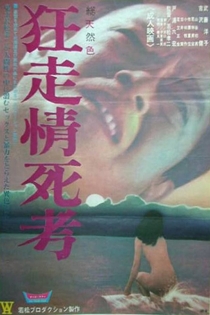
略称連続射殺魔
Masao Adachi
Masao Adachi
AKA Serial Killer documents the social upheaval and political oppression that roiled Japan in the 1960s, profiling a nineteen-year-old serial killer Norio Nagayama. An indictment of media sensationalism, the film humanizes the young man by situating his crimes in the larger context of his environment.
A.K.A. Serial Killer

鎖陰
Masao Adachi
Hiroshi Takeda, Kyôko Kimura
Adachi's follow-up to Bowl using the figure of a woman suffering from an unusual sexual aliment has often been taken as a controversial allegory for the political stalemate of the Leftist student movement after their impressive wave of massive fiery protests failed to defeat the neo-imperialist Japan-US Security Treaty. The ritualistic solemnity of the charged sexual scenes contribute to the oneiric qualities of Closed Vagina which Adachi would later insist was an open work, not meant to deliver any kind of deliberate political message. - Harvard Film Archive
Closed Vagina
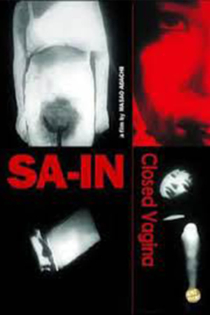
L'anabase de May et Fusako Shigenobu, Masao Adachi et 27 années sans images
Eric Baudelaire
May Shigenobu, Masao Adachi
A film on exile, revolution, landscapes and memory, Anabasis brings forth the remarkable parallel stories of Adachi and May, one a filmmaker who gave up images, the other a young woman whose identity-less existence forbade keeping images of her own life. Fittingly returning the image to their lives, director Eric Baudelaire places Adachi and May’s revelatory voiceover reminiscences against warm, fragile Super-8mm footage of their split milieus, Tokyo and Beirut. Grounding their wide-ranging reflections in a solid yet complex reality, Anabasis provides a richly rewarding look at a fascinating, now nearly forgotten era (in politics and cinema), reminding us of film’s own ability to portray—and influence—its landscape.
The Anabasis of May and Fusako Shigenobu, Masao Adachi, and 27 Years Without Images
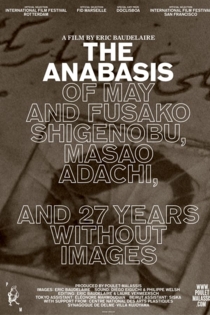
Wan
Masao Adachi
Overripe with psychosexual poetry and stark, oneiric rituals, Adachi's filmmaking debut, made while he was still an undergraduate, counts among the more resonant accomplishments of the now famous Nihon University Film Club. Adachi's obvious fascination with the wide-eyed watchfulness of childhood and the uncanny is an expression of the important surrealist strand running throughout the post-WWII Japanese avant-garde. - Harvard Film Archive
Rice Bowl

ピンクリボン
Kenjirô Fujii
Kiyoshi Kurosawa, Kōji Wakamatsu
Documentary filmmaker Kenjiro Fujii takes a look at the history of a distinctly Japanese brand of softcore pornography in this extensive examination of the "pinku eiga" genre (ピンク映画 Pinku eiga or Pinkeiga). For more than 40 years, so-called "pink" films have served as both a key source of revenue for the Japanese film industry as well as a launching pad for the careers of such mainstream filmmakers as Kiyoshi Kurosawa. After providing a detailed history of the still-profitable and popular genre through interviews with a variety of behind-the-scenes players and clips from such classic pink films as Fish Bait Boobies, director Fujii shifts his focus to the production of an upcoming pink film to offer a glimpse into the creative and stylistic evolution of the genre.
Pink Ribbon

幽閉者 テロリスト
Masao Adachi
Tomorowo Taguchi, Taka Okubo
During a suicide attack on an airport, the hand grenade of 'M', one of three terrorists, malfunctions, leaving him captured. Exposed to maltreatment in prison, he slowly loses his grip on reality as he is forced to confront his ideological convictions.
Prisoner/Terrorist
